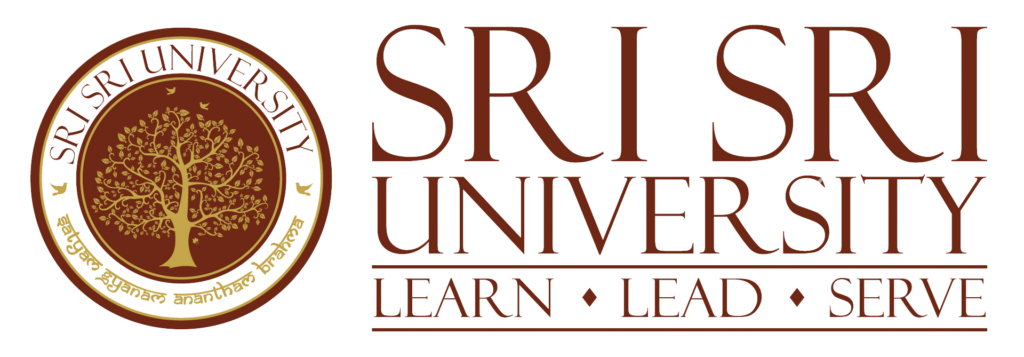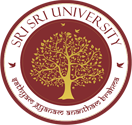COURSE HIGHLIGHTS
- Introduction
- Course Details
- PROGRAM OUTCOME
Applied Art refers to the practical application of artistic principles and techniques to various functional objects and contexts. Fine Art, which is primarily created for aesthetic expression, Applied Art serves a specific purpose or function while still embodying artistic creativity and craftsmanship.
Key features of Applied Art include:
Functionality: Applied Art pieces are designed with a specific purpose or utility in mind, such as graphic design for advertising, product design, or interior decoration.
Integration of Form and Function: While serving a practical purpose, Applied Art emphasizes the aesthetic qualities of the object or design, often marrying form with functionality to create visually appealing and user-friendly products.
Communication: Applied Art is often used as a means of communication, conveying messages, ideas, or information through visual elements such as typography, imagery, and design layout.
Practical Techniques: Artists and designers working in Applied Art employ a range of techniques and materials suited to the intended application, including drawing, painting, printmaking, digital design, ceramics, textiles, and more.
Commercial and Industrial Applications: Applied Art finds extensive use in commercial and industrial sectors, contributing to fields such as advertising, branding, packaging, fashion, interior design, and multimedia production.
Overall, Applied Art combines artistic creativity with practical functionality, serving as a bridge between art and everyday life, enriching both aesthetics and utility in various aspects of human experience.
The applied art program focuses specifically on areas like logo design, branding, campaigning, TV commercial production and illustration, the outcomes may be more tailored to these fields. Here’s how the outcomes might align with each of these specialties:
Branding:
- Strategic Thinking: Understanding branding strategies, market research, and target audience analysis.
- Visual Identity Development: Creating cohesive visual identities, including logos, color palettes, and brand guidelines.
- Brand Storytelling: Crafting narratives and visual elements that convey brand personality and values.
- Application Across Mediums: Knowledge of branding translation across various touchpoints.
Campaigning:
- Campaign Strategy: Developing comprehensive marketing campaigns with clear objectives and messaging.
- Creative Concept Development: Generating innovative ideas aligned with brand objectives.
- Integration of Multimedia: Combining print, digital, social media, and experiential elements for cohesive campaigns.
- Campaign Evaluation: Understanding metrics to measure campaign effectiveness and optimize strategies.
TV Commercial Production:
- Scriptwriting and Storyboarding: Crafting compelling narratives and visualizing shot sequences.
- Production Skills: Proficiency in filming, editing, sound design, and visual effects.
- Understanding Advertising Regulations: Knowledge of legal and ethical considerations in TV advertising.
Illustration:
- Drawing Techniques: Mastery of various styles, both digital and traditional.
- Visual Storytelling: Conveying narratives, emotions, and concepts through illustration.
- Versatility and Adaptability: Adapting styles to suit different contexts and client preferences.
- Portfolio Development: Showcasing technical skill and creative expression across projects.
Completing a course in Applied Art can open up various job opportunities in fields related to design, visual communication, and creative industries. Here are some potential career paths:
Graphic Designer: Utilize your skills in layout, typography, and visual communication to create designs for print and digital media. This could include designing logos, brochures, posters, websites, and other marketing materials.
Illustrator: Create illustrations and artwork for books, magazines, advertisements, animations, and other media. Your creativity and artistic skills can be applied to storytelling and visual communication.
Art Director: Lead creative teams and oversee the visual aspects of projects. Art directors work in advertising agencies, design firms, publishing houses, and other organizations to ensure that visual elements align with the overall vision and objectives.
UI/UX Designer: Focus on user interface (UI) and user experience (UX) design for websites, mobile apps, and software. Your understanding of aesthetics and usability can contribute to creating intuitive and engaging digital experiences.
Animator: Bring characters and stories to life through animation. Whether it’s for films, television shows, video games, or advertisements, animators use their artistic skills and technical knowledge to create moving images and visual effects.
Creative Director: Provide strategic direction and leadership for creative projects and teams. Creative directors work closely with clients or stakeholders to develop concepts, oversee execution, and ensure the delivery of compelling and effective creative solutions.
Multimedia Artist/Animator: Combine various artistic techniques and digital tools to create multimedia presentations, interactive installations, virtual reality experiences, and other innovative projects that integrate visual and interactive elements.
Art Teacher/Instructor: Share your knowledge and expertise by teaching art and design at schools, colleges, or community centers. As an educator, you can inspire and mentor aspiring artists while helping them develop their skills and creativity.
Freelance Artist/Designer: Work independently or as a freelancer, offering your services to clients on a project basis. This allows you to have flexibility in choosing projects and clients, as well as the opportunity to explore different creative avenues.
Exhibition Designer: Design immersive and engaging experiences for museums, galleries, trade shows, and events. Exhibition designers use their creativity and spatial skills to conceptualize and create environments that effectively showcase artifacts, artworks, or products.
These are just a few examples, and the field of applied art offers a wide range of opportunities for creative individuals with diverse interests and skills. Keep exploring and honing your craft to find the career path that aligns best with your talents and aspirations.
COURSE DETAILS
COURSE FACT SHEET
10+2 examination or equivalent from any stream from a recognised board with a minimum of 50% score
ELIGIBILITY
(For ADMISSION)
06 SEMESTER
(03 YEARS FULL TIME)
INR 50000 / $US 1200
(TUITION FEE PER SEMESTER**)
What People Say About Us

Vandana Shiva, Social Activist
Author

Dr. Vijay, Professor
University of Hyderabad

Vinish Kasturia
Mathematics Professor, IIT
Ms. Anja Jessurun Director Shankara
Health And Wellness By Ayurveda Netherlands, Europe

Mr. Sourabh Sharma Manager
Supply Chain Maruti Suzuki India Ltd
Applications for 2024 Open

